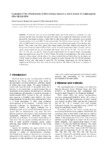Por favor, use este identificador para citar o enlazar este ítem:
http://www.alice.cnptia.embrapa.br/alice/handle/doc/1000945Registro completo de metadatos
| Campo DC | Valor | Lengua/Idioma |
|---|---|---|
| dc.contributor.author | CANOSSA, S. | pt_BR |
| dc.contributor.author | AGUSTINI, B. C. | pt_BR |
| dc.contributor.author | SILVA, G. A. da | pt_BR |
| dc.date.accessioned | 2014-12-02T07:48:49Z | - |
| dc.date.available | 2014-12-02T07:48:49Z | - |
| dc.date.created | 2014-11-26 | pt_BR |
| dc.date.issued | 2014 | pt_BR |
| dc.identifier.citation | In: WORLD CONGRESS OF VINE AND WINE, 37., 2014, Mendonza, Argentina. Abstracts... Mendonza: International Organisation of Vine and Wine, 2014. | pt_BR |
| dc.identifier.uri | http://www.alice.cnptia.embrapa.br/alice/handle/doc/1000945 | pt_BR |
| dc.description | To make the wine, you do not need killer strains used for the purpose of dominance. It is only necessary that the yeasts are neutral. The aim of this study was to evaluate the effectiveness of killer toxins produced by some strains to produce a lethal effect on other strains killer. The experiments were conducted using the medium must Lorena M80: 20 with methylene blue. The killer test strains used were: 7M, 12M, 24M, 25M and 30M isolated from grape berries derived from the cultivar Merlot municipality of Pinto Bandeira (RS, Brazil). These strains were tested against other strains isolated killer Pinto Bandeira, they being the 3CF lineage derived from the cultivar Cabernet Franc, and the 24A strain isolated from cultivar Ancelota,; and also against strains isolated from the city of Colombo (PR, Brazil), called 4C, 6C, 7C, 10C, 11C, 12C, 13C, 14C, 15C, 17C, 19C, 20C, 22C and 24C. Were also used in the reference 1B, 91B and K1 strains. The inoculated plates were placed in an oven at 18 ° C 48 to 72 hours. The results revealed that none of the isolates showed sensitivity of these regions with the killer of five strains isolated killer test Merlot. However, the pattern and 91B K1 strains are sensitive to the killer factor produced by strains 30M and 12M. The 7M line introduced himself as killer only with respect to strain 91B. The taxonomic identification was first performed by amplifying the ITS region. Thus, three of the five strains analyzed, 7M, 24M and 25M, showed an amplicon at 610 base pairs. | pt_BR |
| dc.language.iso | eng | eng |
| dc.rights | openAccess | eng |
| dc.subject | Levedura | pt_BR |
| dc.title | Evaluation of the effectiveness of killer toxins produced by some strains of yeasts against other strains killer. | pt_BR |
| dc.type | Artigo em anais e proceedings | pt_BR |
| dc.date.updated | 2014-12-02T07:48:49Z | pt_BR |
| dc.subject.thesagro | Viticultura | pt_BR |
| dc.subject.thesagro | Vinho | pt_BR |
| dc.subject.thesagro | Fermento | pt_BR |
| dc.subject.thesagro | Fermentação | pt_BR |
| dc.subject.thesagro | Linhagem | pt_BR |
| dc.subject.thesagro | Biologia molecular | pt_BR |
| dc.subject.thesagro | Genética | pt_BR |
| dc.subject.thesagro | Saccharomyces Cerevisiae | pt_BR |
| dc.subject.nalthesaurus | Viticulture | pt_BR |
| dc.subject.nalthesaurus | Grapes | pt_BR |
| dc.subject.nalthesaurus | Genetics | pt_BR |
| dc.subject.nalthesaurus | Molecular biology | pt_BR |
| dc.subject.nalthesaurus | Yeasts | pt_BR |
| dc.description.notes | Resumo expandido. | pt_BR |
| dc.format.extent2 | 4 p. | pt_BR |
| riaa.ainfo.id | 1000945 | pt_BR |
| riaa.ainfo.lastupdate | 2014-12-01 | pt_BR |
| dc.contributor.institution | BRUNA CARLA AGUSTINI, CNPUV; GILDO ALMEIDA DA SILVA, CNPUV. | pt_BR |
| Aparece en las colecciones: | Artigo em anais de congresso (CNPUV)  | |
Ficheros en este ítem:
| Fichero | Descripción | Tamaño | Formato | |
|---|---|---|---|---|
| Bruna2014755.pdf | 208.7 kB | Adobe PDF |  Visualizar/Abrir |









